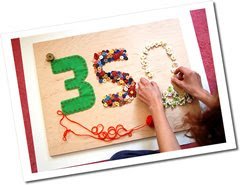
Lately I’ve been thinking about the environmental impact of craft. In particular, my craft – quilting. There is a perception that quilting is inherently environmental – at least in the past. The use of scraps from clothing and functional items put together in patterns to make something both utilitarian and beautiful. It sounds like the perfect example of upcycling (making something better than the original) rather than recycling.
Sure, there are still quilters these days that only make things from scraps – dutifully saving pieces as small as 1 by 1 inch squares to create masterpieces. But let’s be honest, most long term quilters have impressive stashes of fabrics. And those stashes are filled with fabric that could be years old, in pieces rarely smaller than a fat quarter and sometimes a few metres, because you never know what you might use it for. There are discussion groups around the sorting and storage of said fabric, books about using it up, challenges to create something without buying anything new, and even the assignment of all that fabric in wills.
Quantity is one thing, quality is another entirely. Most of us use 100% cotton exclusively. Art quilters and some creative folks will design and experiment with vintage polyesters, blends, or wools. Generally we think that 100% cotton quilts with cotton batts are of the highest quality, and proudly give our creations away to give comfort and warmth. As we should.
But, and this is the but that’s been bothering me lately, what goes into making and dying that fabric? I know you can get organic cottons these days. And sometimes you can even find some more creative or colorful options, instead of the unbleached cottons that typify green fabric. I’m not sure, however, I can give up my whites and my bold prints. So, I’ve been trying to get more info on the entire fabric creation process – from cotton growth to dye content. Unfortunately, I’m not having a lot of luck because the manufacturers don’t like to share that info. I’ll keep digging and report on my findings.
The other big issue I think about is the waste. Sure, I keep all my useful scraps. Smaller pieces get put in a bag (a plastic ziptop... I know) to be donated to someone who makes Project Linus scrap quilts. Bigger pieces I do keep because I do like to paper piece and those odd pieces come in handy. But what about all the selvages, the thread clippings, the batting scraps, the empty spools, the used patterns, the freezer paper, and all the other garbage left over? As far as I can tell the only thing that can be recycled, at least in our market, are the empty plastic spools.
For an interesting experiment I’ve been keeping all the garbage from the latest project, the baby quilt. When I am finished I will post pictures – of the garbage and the quilt.
On top of all this, there is simply the matter of the energy used in production of the materials we use and the creations we ourselves put together. How many work by candlelight in a wood heated house with scraps that we piece together and quilt by hand? Yeah, I thought so. So, just for me I have to account for the energy used by my sewing machine, iron, Ott light, overhead light, and stereo (a girl needs tunes to keep her going). And in the winter, I sew in the New York open concept loft-style basement, sometimes necessitating that I turn up the furnace a degree, although I am still wearing slippers and a cozy sweater (my basement is damn cold with no insulation).
Hmm, maybe I need to add in the digital photography and computer use now that I am blogging.
Don’t forget about water use. Prewashing, washing, ironing, blocking… All that water has to be treated, transported, heated, used, and then treated again. What about detergents or other chemical products like starch or sizing? That goes into our water supply as well.
I haven’t found the answers yet for all my questions, and I will keep investigating. I can only account for quilting and the little bit of other sewing I do. That means I can’t comment on other crafts. Do scrapbookers keep their bits or recycle? What about painters?
To get you started on your own journey to greening your own craft world I’ve put together some links of good green links for us quilters and crafters.
Crafting a Green World is an excellent site that covers all types of craft and how you can use craft in an environmentally friendly way. They have some great Earth Day posts that I need to devour for info.
Sew Green has some good links and resources, and is written by designers.
Of course, I have to provide some basic cotton information, a la
Wiki.
 What a treat I had yesterday. Hubby's cousin was staying with us for a few days at the end of of her solo vacation. At 11 she was into shopping and babysitting. Thankfully she got her shopping out of the way with the other cousins. So while my girls were napping yesterday we decided to make her a pillowcase to take home. She knew how to sew, in general terms. I knew how to make a pillowcase, in general terms.
What a treat I had yesterday. Hubby's cousin was staying with us for a few days at the end of of her solo vacation. At 11 she was into shopping and babysitting. Thankfully she got her shopping out of the way with the other cousins. So while my girls were napping yesterday we decided to make her a pillowcase to take home. She knew how to sew, in general terms. I knew how to make a pillowcase, in general terms.


